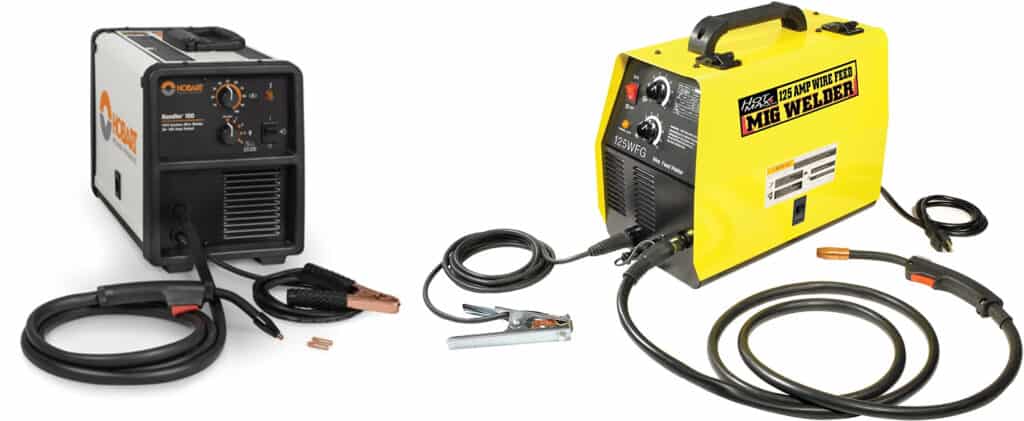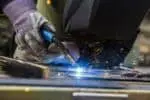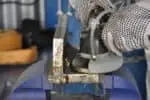Thinking of getting a new welder but not sure which one to go for? There are a variety of welding machines available in the market which are used in different welding methods and each one of us prefers one over another. Some of you might think that gas MIG welder is better than flux core and others may say the exact opposite of it. So which one is actually better?
In my opinion both the welders are apt or pertinent when it comes to individual welding methods. There are certain characteristics which make them equal and different from each other. While MIG welder produces a fine looking metal, Flux core is slightly cheaper. MIG welder is suitable for beginners but at the same time it cannot weld thicker metals which Flux core can take care of.
One shoe can’t fit all. In the same way both the welders are equally important depending upon the type of welding and your requirements. That is why we have explained the basic differences between the two welders because choosing the best among the two can be a daunting task.
What is Flux Core Welder?
Flux Core welders are used mainly and only for Flux core welding often denoted by FCAW. The process doesn’t use gas to shield the weld. Flux core welder has got a hollow wire which contains flux powder which protects the weld from atmospheric contamination.
This welder won’t weld very thin materials as it can easily burn through. Although, you can trust Flux core welder when it comes to penetration rate. FCAW can handle small amounts of debris on the surface which needs to be welded but the same is not possible with MIG welders.
What is a Gas Metal Arc Welding?
Metal Inert Gas welding also known as Gas Metal Arc Welding is denoted by GMAW. The welder uses inert gas to guard the weld from any kind of contamination.
Compared to FCAW, the welds produced by this welder are cleaner and don’t have any slag to chip off. However, the disadvantage with this welder is that it is difficult to use outdoors or in drafty conditions.
See also: Best Budget Gasless MIG Welder
Use of Shielding Gas
It is evident from above definitions that the main difference between the two welders and the welding process is the use of shielding gas.
By now, you must be aware that the shielding gas is required with the MIG wire and therefore you need to buy a pressure gas tank which can be connected to the Gas Metal Arc welder with the help of a running hose.
This hose supplies gas into the welder. I know you might be wondering which all gasses are used in this process. GMAW uses certain gases for protection. They are mainly argon, carbon dioxide and a mixture of both. However, in the case of stainless steel, a mixture of carbon dioxide, argon and helium is used.
Talking about flux core welders, the shelf-shield flux core welder produces its own protection gas at the time of welding. The wire in the flux core welder melts on heating and in turn produces gas which then counterbalances the weld pool.
Flux core welders in this case are economical since you don’t have to spend an extra amount on welding gas.
What kind of wire is used with both the welding?
Whether it’s FCAW or GMAW, both the welding procedures use wire as an electrode. While the MIG welder uses a solid wire electrode, its counterpart works on a tubular welding wire.
How are these two wires different? Interestingly, Flux core uses a tubular wire which is hollow and has got flux in the center. And that’s how the mechanism has got its name.
On the other hand, GMAW uses a solid wire electrode. If you are thinking that you can interchange the two then it is absolutely contraindicated. Both the wires behave in a different way and have their own properties.
Advantages and Disadvantages of Flux Core
Pros of Flux Core Welder
✅ It is stable and works well even under harsh atmospheric conditions.
✅ It can weld thick pieces of metal and alloys.
✅ You don’t have to indulge in any complex procedure as its setup is quite simple.
✅ Cheaper than Gas Metal Arc welder
✅ You don’t need any extra gas since it is self shielded.
Cons of Flux Core welder
❌ It is not recommended for thinner materials as metals under 20 gauge can easily burn with flux core.
❌ It is not suitable for beginners because of its critical gun position.
Advantages and Disadvantages of MIG Gas
Advantages of Gas MIG welder
✅ Its maintenance and setup are easy and in fact it is quite easy to operate.
✅ Suitable for beginners.
✅ Gives a fine weld with a soft arc comparatively with less spatter.
✅ It is easier to clean
Disadvantages of GMAW
❌ It cannot weld thicker metals.
❌ Biggest disadvantage is that if you are purchasing a gas MIG welder then you’ll have to purchase tools like gas tank, electric valve and a hose in order to complete the setup. Which is why it is more expensive than flux core.
Comparing Flux Core and MIG Welder
| Differentiating Criteria | Flux Core Welder | Gas Metal Arc Welder |
| Use of shielding gas | Not used | Uses gas like argon, helium and carbon dioxide |
| Kind of wire to use | Tubular welding wire is used | Solid wire electrode is used |
| Penetration ability | Gives good penetration but not as great as GMAW | Gives better penetration |
| Welding Quality | Gives strong weld but not very fine | Gives great looking metal |
| Slag and spatter produced | More spatter produced | Lesser spatter produces |
| Cost | Relatively cheaper | Costlier because of its extra equipments |
Final Verdict
As said, one size doesn’t fit all. Same way both, flux core and gas metal arc welders have some advantages and disadvantages. Both have different characteristics and are used for different welding applications.
If you are to choose between the two, I would suggest you evaluate your needs first. After that follow the manual of the machine and handle it with care. This way, the machine will serve all your purposes and will work efficiently.








